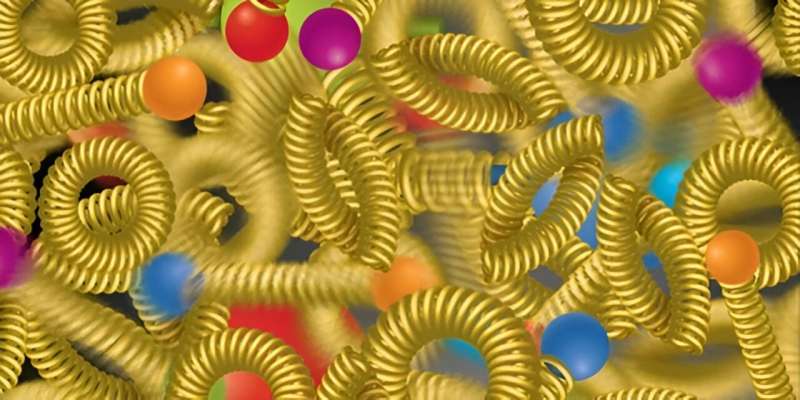Exploring gluon saturation in large atomic nuclei is one of the goals of future electron-ion colliders. The researchers propose a nuclear energy-energy correlation method that provides a unique detection of the onset of gluon saturation.Image source: Brookhaven National Laboratory
The U.S. nuclear physics community is preparing to build the Electron-Ion Collider (EIC), a flagship facility for probing the properties of matter and the strong nuclear force that holds it together. The EIC will allow scientists to study how nucleons (protons and neutrons) arise from the complex interactions of quarks and gluons.
A project led by researchers at Lawrence Berkeley National Laboratory demonstrates an important detector for studying gluon saturation in future EICs. Gluon saturation is the highest energy phenomenon within an atomic nucleus, when the production of gluons and their recombination are balanced, causing the gluon density to no longer depend on the collision energy.
The project shows that the nucleon energy-energy correlation (NEEC) provides different predictions from theories encoding high-density gluon saturation. Therefore, NEEC measurements will provide a good opportunity to determine the occurrence of gluon saturation phenomena in EIC electron-nucleus collisions.
The project resulted in two studies, one of which was published in Physical Review Letters Another one is in Physical Review D.
The NEEC probe has an advantage over other standard high-energy processes because it is fully inclusive. This makes the observable results theoretically and experimentally clean.
The researchers also showed that linearly polarized gluons confined inside unpolarized nuclei can be analyzed through additional energy correlations. The interference of gluons rotating in opposite directions translates into an asymmetry in the count rates observed in the detector. This provides a glimpse into the exquisite characterization of linearly polarized gluons and the associated nuclear tomography.
This will lead to an integrated approach to studying the universal behavior of gluon saturation. It will also complement future EIC research on other high-energy processes.
More information:
Liu Haoyu et al., Nuclear energy correlator of colored glass condensates, Physical Review Letters (2023). DOI: 10.1103/PhysRevLett.130.181901
Li Xiaolin and others used calorimetric asymmetry to elucidate nucleon-gluon interference, Physical Review D (2023). DOI: 10.1103/PhysRevD.108.L091502
Provided by the U.S. Department of Energy
citation: New method could explore gluon saturation in future electron-ion colliders (2024, April 23), Retrieved April 23, 2024, from https://phys.org/news/2024-04-method -explore-gluon-saturation-future.html
This document is protected by copyright. No part may be reproduced without written permission except in the interests of fair dealing for private study or research purposes. Content is for reference only.
#method #explore #gluon #saturation #future #electronion #colliders
Image Source : phys.org
